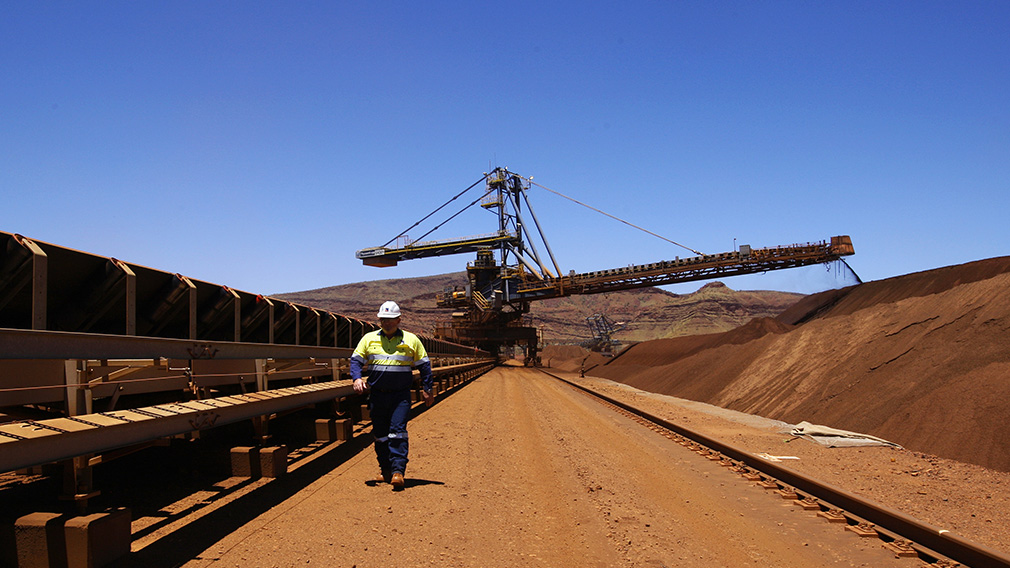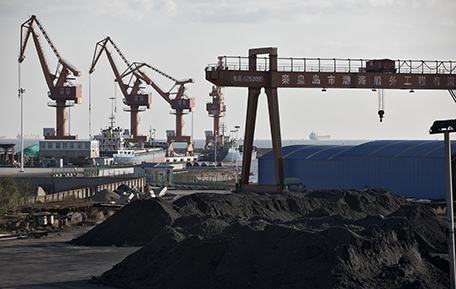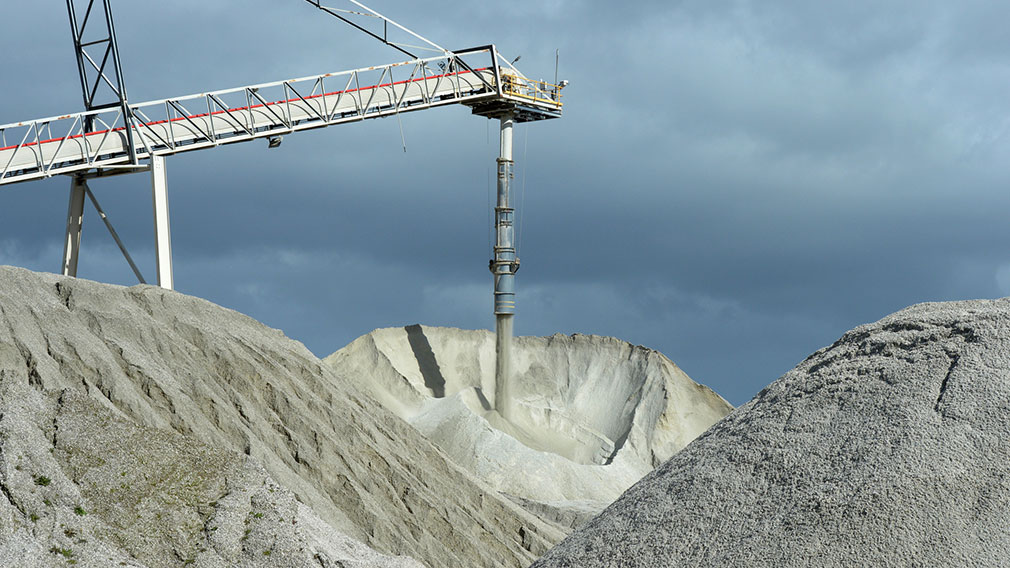Commodities, bifurcation and a bit of luck

A stacker loads crushed iron ore onto a stockpile in the Pilbara. (Getty)
As we head into another federal budget and look to economic recovery, our mineral resources are once again supporting the “lucky country” moniker.
Despite the COVID-19 pandemic causing untold economic pain around the world, China’s supercharged and earlier recovery – which has sent Chinese steel production surging 25 per cent from the COVID low to July – has boosted the iron ore price to five-year highs. Before easing a bit in recent days, the key steel making ingredient neared $US130 a tonne, up from around $US80 a tonne in late March and April when fear about the pandemic was roiling global markets.
As our biggest export earner, that’s clearly good news for Australia, particularly given Treasury’s conservative forecast of $US55 per tonne in the budget.
Similarly to post the global financial crisis, China’s stimulus-fuelled recovery and the subsequent iron ore price spike is proving a very fortuitous development for Australia during the worst downturn since the Great Depression.
Australia’s historic 7 per cent contraction in GDP in the second quarter looked good compared to other nations, the UK down a massive 20.3 per cent, Europe 12.1 per cent, the US 9.1 per cent and Japan 7.8 per cent.
But this “mining boom” is also proving different to the past.
Rather than the rising China tide lifting all boats the same, commodities have become bifurcated of late. Those significantly dependent on Chinese demand are surging while those dependent on broader global demand are lagging. Iron ore is the standout for the former group, while coal is the defining commodity for the later, hit by COVID lockdowns and the shift to renewables.
Such has been China’s stronger than expected demand, we recently lifted our end year forecast for 62%fe iron ore – the premium product produced by the likes of Pilbara giants BHP Billiton and Rio Tinto – from $US90 a tonne to $US110 a tonne. We also lifted our near-term Brent oil forecast and base metals forecasts, while reducing coal prices.
.png)
Given the COVID hit has been concentrated in services sectors such as hospitality and tourism, energy prices were particularly hard hit and slower to recover, while base metals recovered quite strongly as global manufacturing moves back into expansionary territory.
But for iron ore, the strength of the Chinese steel industry compared to the rest of the world’s recovery (up a smaller 14 per cent from the COVID low) matters a lot because China is dependent on imports for the majority of its iron ore. Chinese imports surged almost 30 per cent in the two months to July taking them to a new record high of 113 million tonnes, boding well for Australia at a time when exports from Brazil are still recovering from COVID disruptions.
China’s insatiable iron ore demand has also played out across the states – Western Australia’s economic recovery has been bolstered, albeit assisted by its hard border closure and minimal COVID-19 restrictions. In contrast, states more exposed to coal haven’t fared as well from China’s recovery, while trade tensions, tariffs and bans have created uncertainty for farmers nationwide, partly offsetting the positives from recent rainfall.
However, all good things ultimately come to an end and we expect iron ore demand to peak this year, making a return to post GFC price highs of around $US180 a tonne unlikely.
But prices are also unlikely to dive straight away.
With Chinese steel prices continuing to rise through early September and little scope for a meaningful increase in seaborne iron ore supply until 2021, a more meaningful correction in ore prices is unlikely until the Chinese steel cycle matures as we move into next year. Look for the classic signs of maturity in rising steel inventories (they remain relatively elevated), moderating steel sales growth and softer steel prices.
By December next year, we expect prices to be at $US90 a tonne, notably below today’s spot prices albeit slightly higher than our previous expectation of $US87 a tonne.
But the commodities gains and upgrades of late have not been all one way.
Ongoing weakness in the seaborne coal trade saw us nudge down our Queensland metallurgical coal forecasts to $US90 a tonne by the end of 2020.
In contrast to iron ore, coal – Australia’s second largest export – has had a rough ride.

Piles of coal near port facilities at the Qinhuangdao Port in China. (Getty)
Firstly, China is relatively self-sufficient in coal, importing a small share of its total needs. Even for metallurgical coal, which is also used in the steel making process, China imports just 10 per cent of its total consumption (mostly from Queensland). Thus, the collapse in steel production in the rest of the world has boosted supply and turned seaborne metallurgical coal trade into a buyers’ market. Chinese quota restrictions are also biting with total coal imports in August down 37 per cent on the prior year.
Thermal coal is having an even tougher time.
Not only are Chinese imports sharply lower, the International Energy Agency expects global thermal coal demand to collapse 8 per cent in 2020 as lockdowns hit power demand. In terms of seaborne trade, which is relevant to Australia, the largest decline in demand has come from major buyer India as economic activity slumps particularly hard due to COVID shutdowns.
With over 50 per cent of the global seaborne trade for thermal making a loss on the current spot price, deep production cuts have already started and the market is starting to balance market, but the shift to renewables and gas in many countries, particularly in Europe, is impacting the longer-term demand outlook.
To be sure, coal demand will grow again from 2021, but future demand will be lower than pre-COVID-19 levels and expectations at that time.
Our commodities are again playing an important role in the nation’s economic recovery, particularly those exposed to China’s infrastructure and construction-led recovery. While iron ore price party is likely to wind down a bit next year, the current windfalls are welcome news for a government facing into the biggest budget deficit since World War II and prices around $US100 a tonne for the medium term remain supportive.
At a time when the virus is making no country feel all that lucky, perhaps we’re still luckier than most.
The information in this article is general information only, it does not constitute any recommendation or advice; it has been prepared without taking into account your personal objectives, financial situation or needs and you should consider its appropriateness with regard to these factors before acting on it. Any taxation position described is a general statement and should only be used as a guide. It does not constitute tax advice and is based on current tax laws and our interpretation. Your individual situation may differ and you should seek independent professional tax advice. You should also consider obtaining personalised advice from a professional financial adviser before making any financial decisions in relation to the matters discussed.



